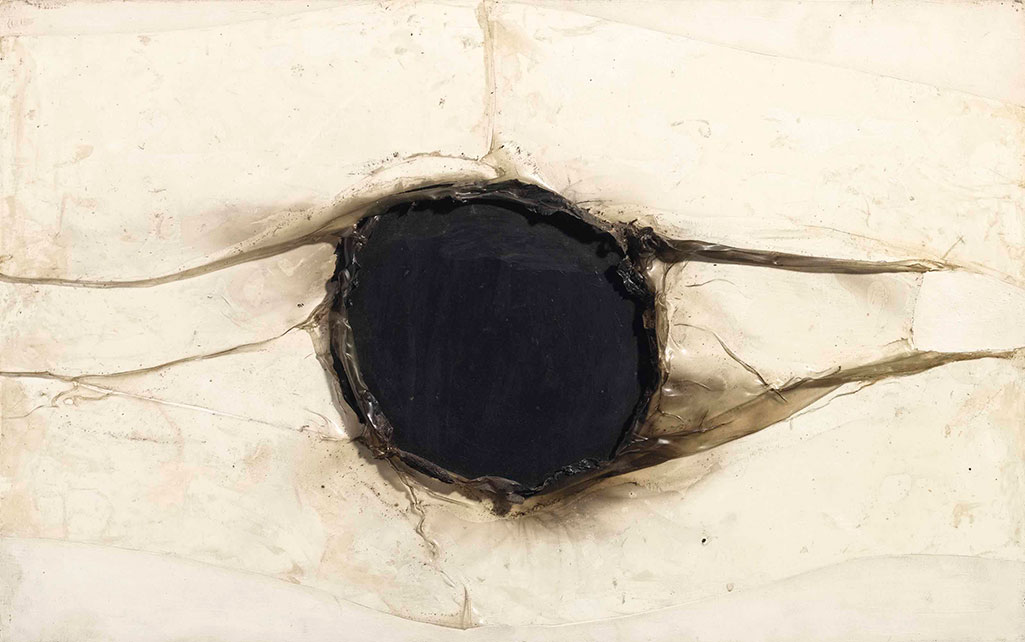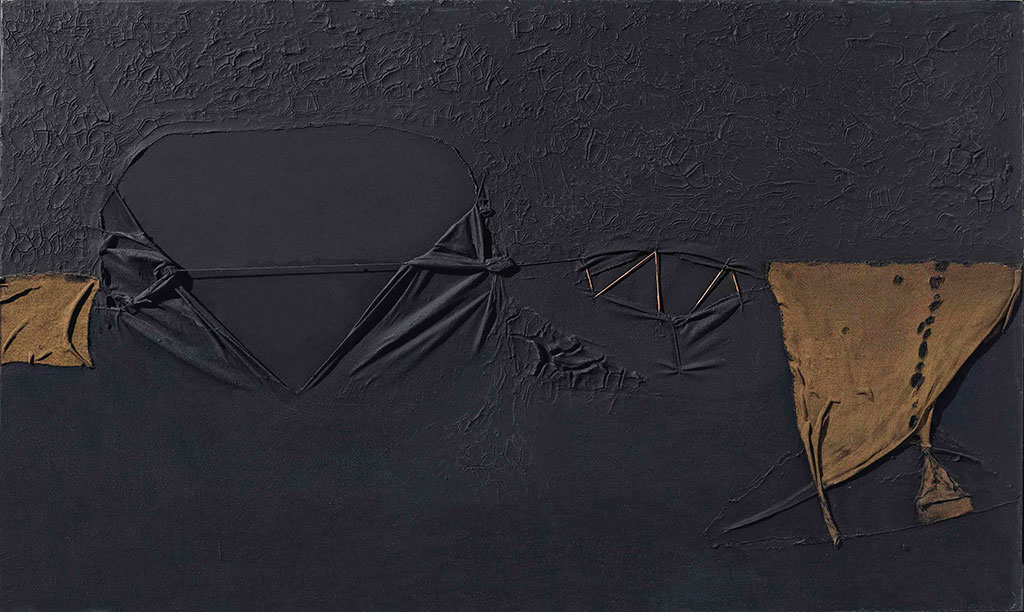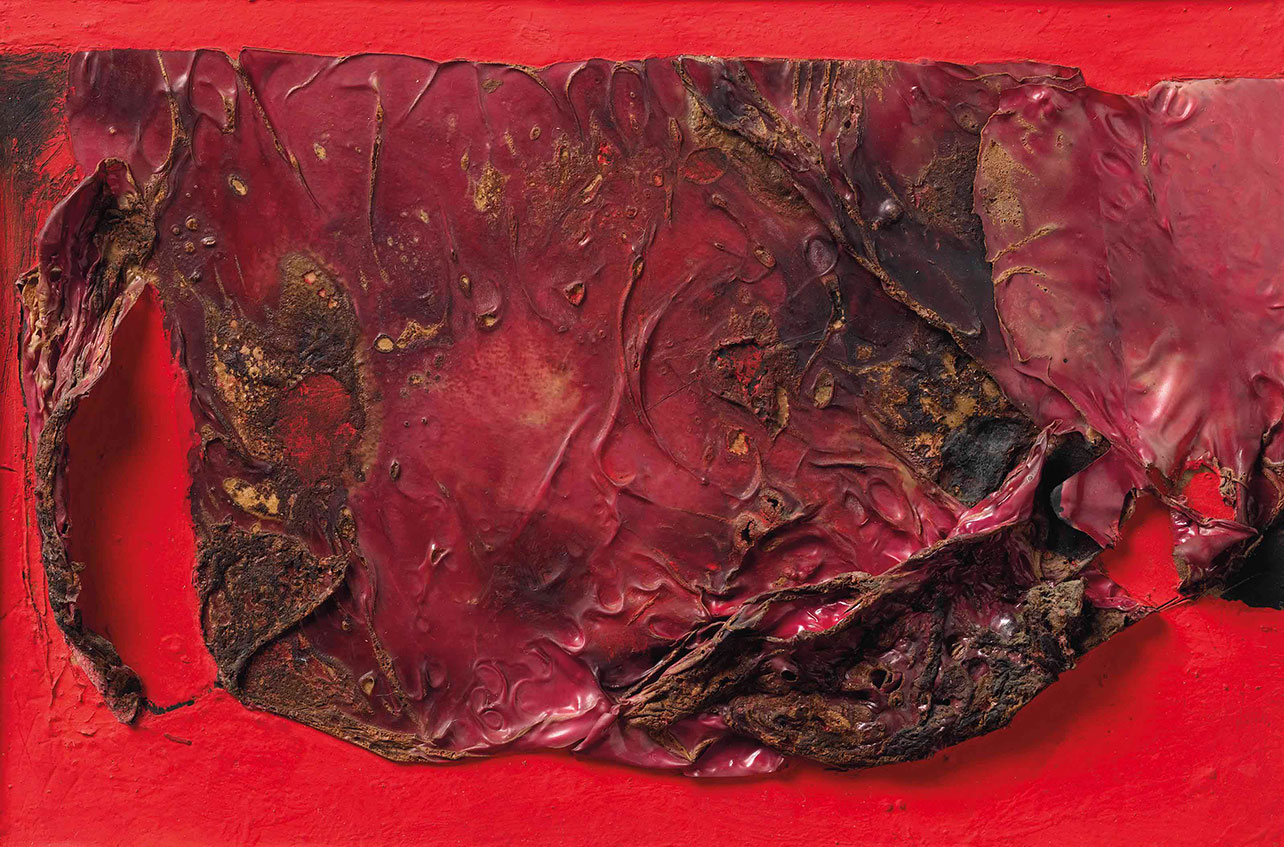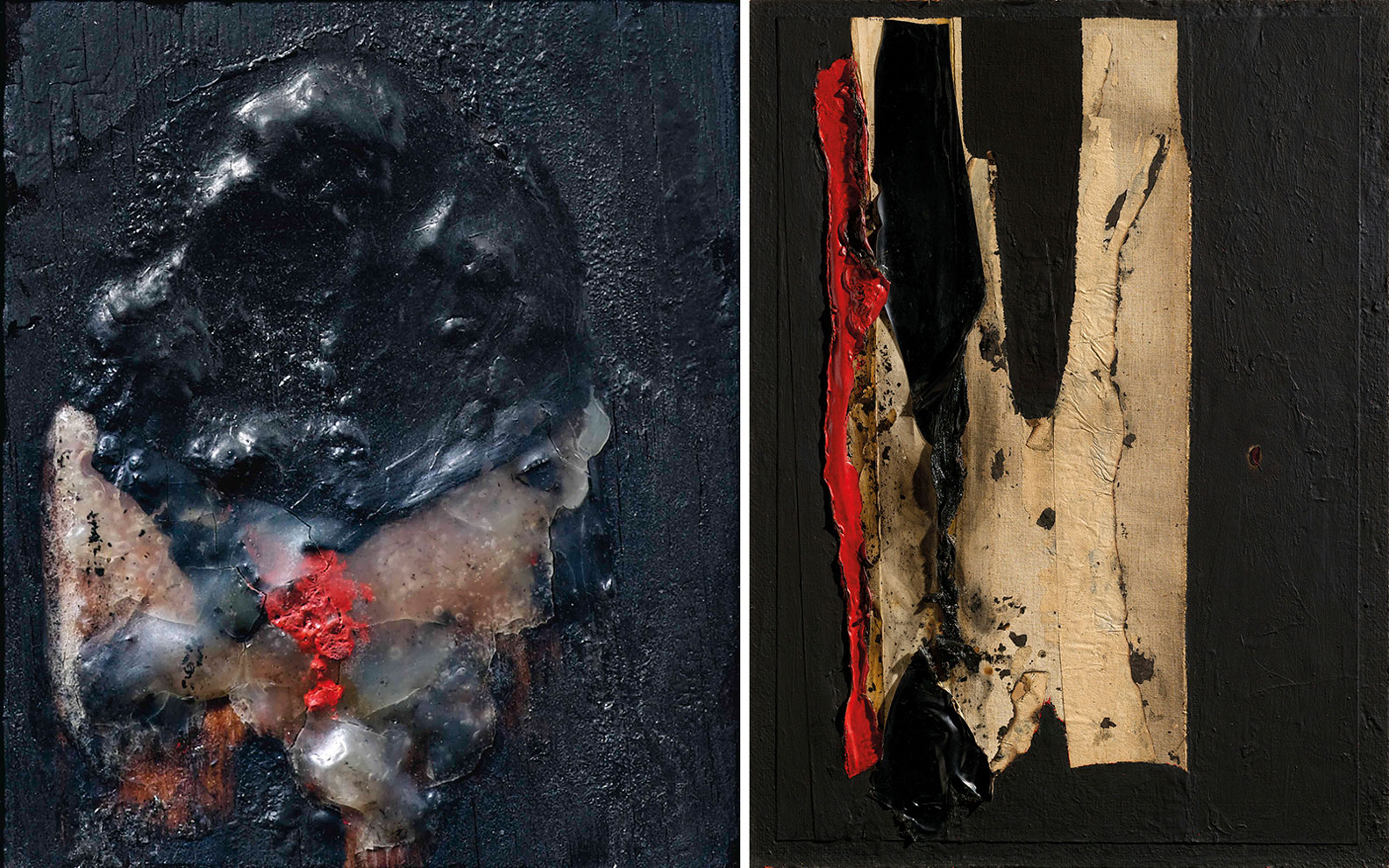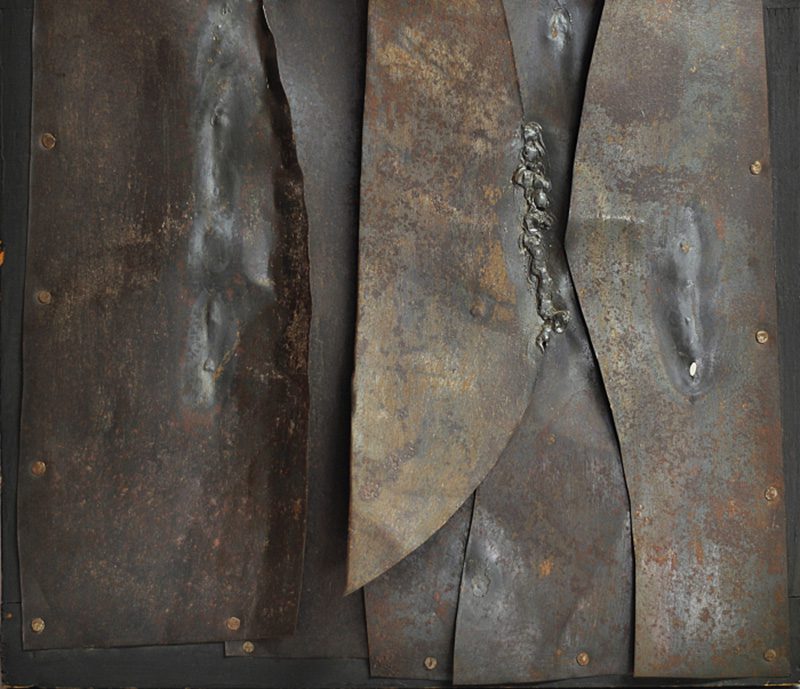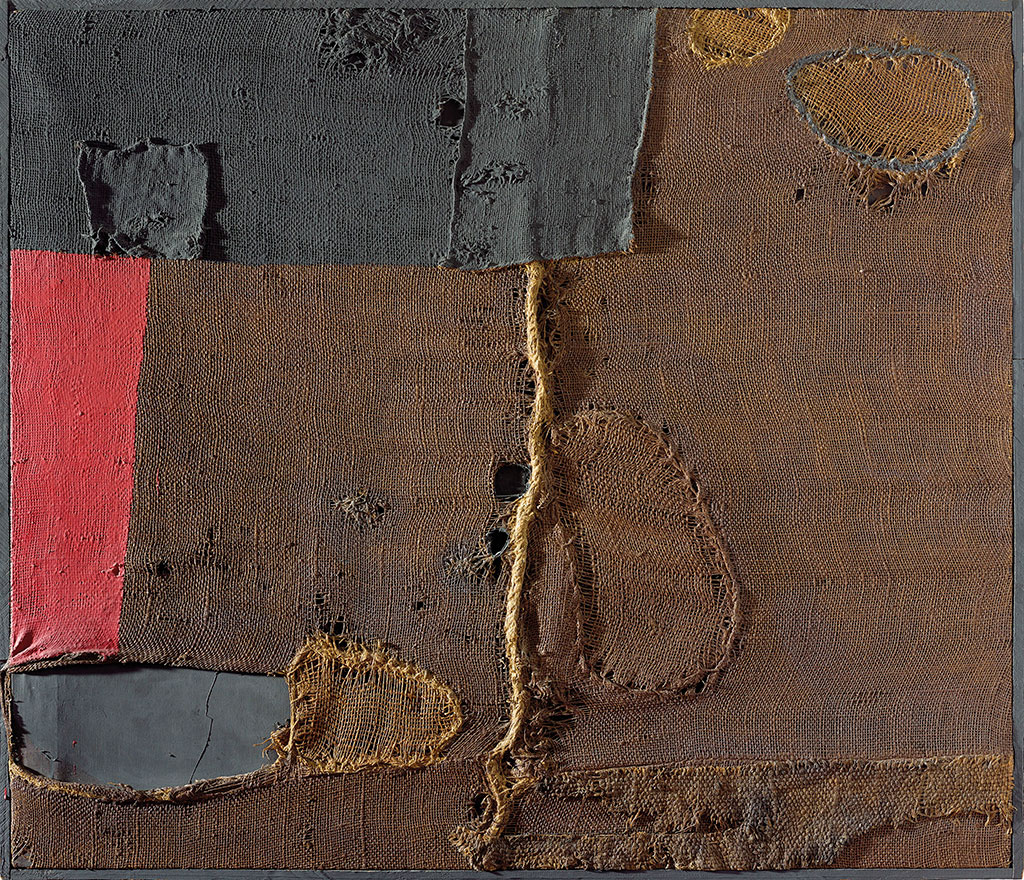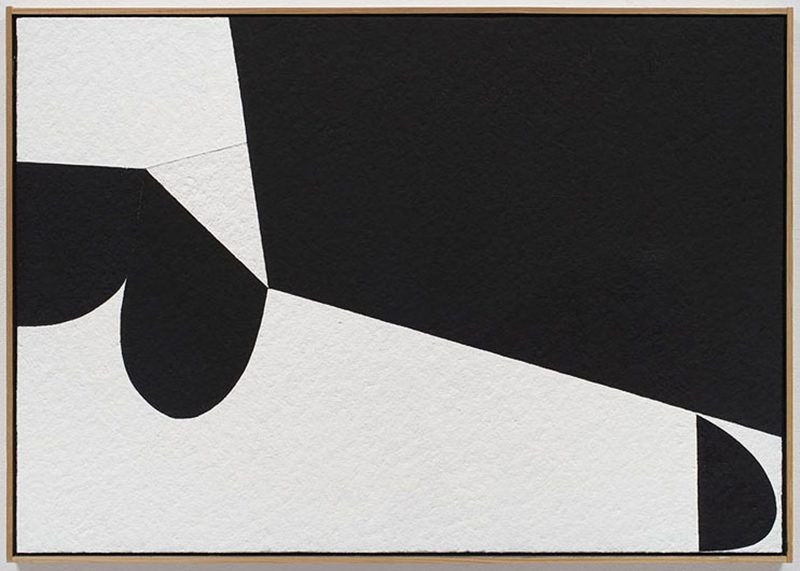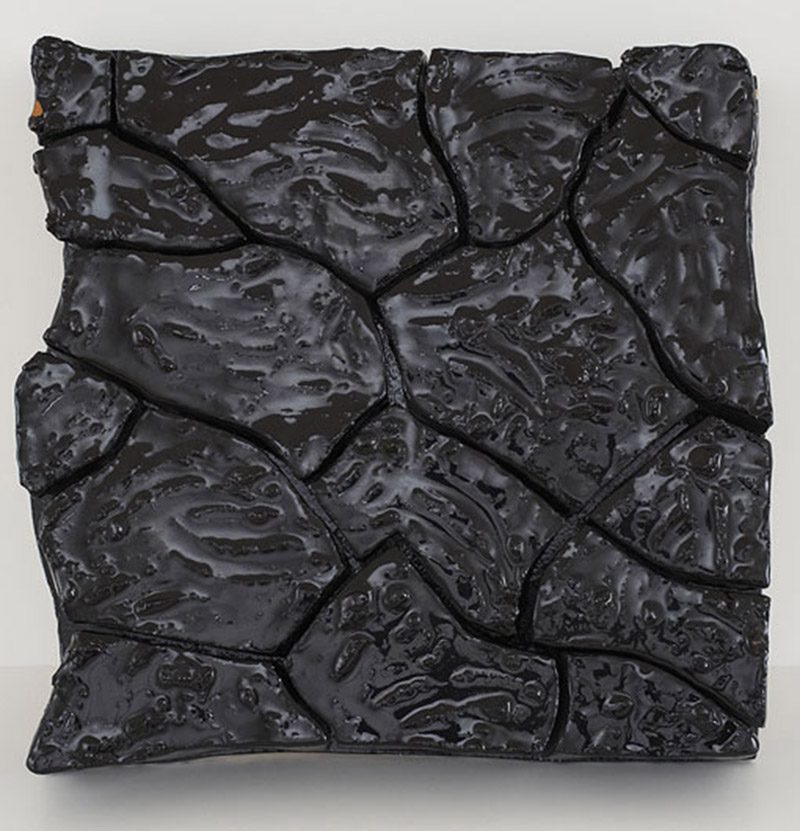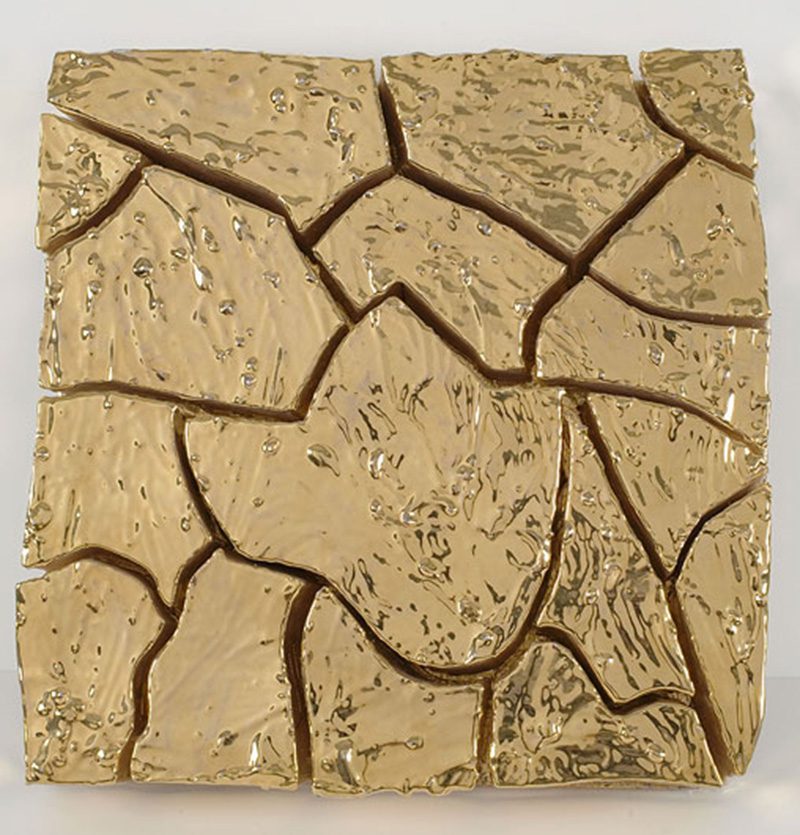TRACES: Alberto Burri
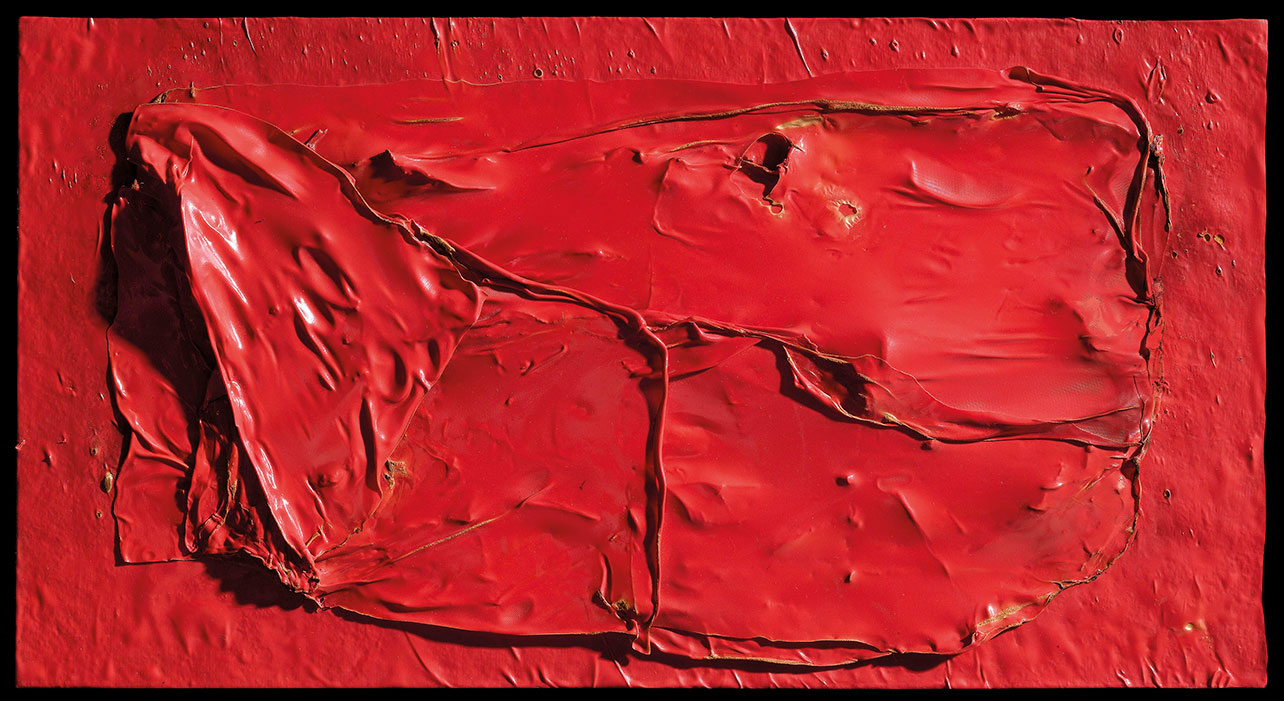 Today is the occasion to bear in mind Alberto Burri (12/3/1915-13/2/1995), he was one of the most important figures of the Italian post-war period, whose works had a fundamental influence, not just on artists of the time, but on younger artists today. This column is a tribute to artists, living or dead, who have left their mark in Contemporary Art. Through documents or interviews, starting with: moments and memories, we reveal out from the past-unknown sides of big personalities, who left their indelible traces in time and history…
Today is the occasion to bear in mind Alberto Burri (12/3/1915-13/2/1995), he was one of the most important figures of the Italian post-war period, whose works had a fundamental influence, not just on artists of the time, but on younger artists today. This column is a tribute to artists, living or dead, who have left their mark in Contemporary Art. Through documents or interviews, starting with: moments and memories, we reveal out from the past-unknown sides of big personalities, who left their indelible traces in time and history…
By Dimitris Lempesis
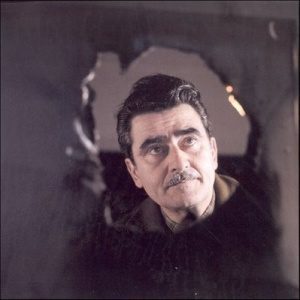 Alberto Burri was born in Città di Castello. In 1940 he received a degree in medicine from the Università degli Studi di Perugia. He served in the Ethiopian campaign and in World War II, Following his unit’s May 1943 capture in Tunisia he began painting in 1944 in a Texas prisoner-of-war camp. There he developed his surgeon’s skill into artistic creation. He used the limited materials available to him at the camp, converting them into works marked by his experience of turmoil and violence. He sewed together scraps of burlap, metal, and wood to create metaphors for torn and bleeding flesh. In February 1946, Burri was repatriated to Italy and set up a studio in Rome. After his first solo exhibition, at the Galleria La Margherita in 1947, he visited Paris and was influenced by Joan Miró and Jean Dubuffet. Burri exhibited with the Rome Art Club, which familiarized him with Futurist Arte Polimaterica. Experimenting with unorthodox pigments and resins, he produced his “Catrami” and “Muffe”, as well as protruding, sculptural canvases that he called “Gobbi”. By 1950 he was making assemblages out of burlap bags and household linens “Sacchi” and “Biachi” that garnered him international acclaim. His first solo exhibitions in the United States took place in 1953 at the Allan Frumkin Gallery, Chicago, and the Stable Gallery, New York, that same year his work appeared in “Younger European Painters: A Selection (1953-54)” at the Solomon R. Guggenheim Museum. In the late ‘50s Burri enriched the early textile, wood, paint, and plaster collages with metal scraps. In these “Ferris”, he subjected the metal to the same mutilations, burnings, and healings to which he had subjected the previous materials. The works thus blend natural colors and textures with burned, oxidized, welded, and painted surfaces. The “Ferris” of the late gave way in 1963 to the “Plastiche”. Here Burri stretched transparent plastic sheets over the canvas, then perforated, shriveled, and charred them. The plastic, with its evocations of the supermarket, of packaging, of life in the technological society, was subjected to the same mutilation, the characteristic slashing, charring, and healing, to create shriveled, scarlike edges and gaping craters revealing the painted canvas. Burri experimented with wood in the same manner. The ‘70s marked a stylistic shift as Burri began painting large, brightly-colored abstracts on monumental sheets of particle board. In the late ‘80s and ‘90s, Burri chose Cellotex, a compound derived from the scission of cellulose, as his preferred medium. In a series of black on black Abstracts, he employed the Cellotex to support pigment to create subtle variations in the tone and texture of the paint. Showing the influence of trompe l’oeil, the geometric shapes thus created morph into stylized letters that form an anagram of the series’ title. In his last years, he suffered from emphysema. He died of respiratory failure at Pasteur Hospital in Nice on 13/2/95.
Alberto Burri was born in Città di Castello. In 1940 he received a degree in medicine from the Università degli Studi di Perugia. He served in the Ethiopian campaign and in World War II, Following his unit’s May 1943 capture in Tunisia he began painting in 1944 in a Texas prisoner-of-war camp. There he developed his surgeon’s skill into artistic creation. He used the limited materials available to him at the camp, converting them into works marked by his experience of turmoil and violence. He sewed together scraps of burlap, metal, and wood to create metaphors for torn and bleeding flesh. In February 1946, Burri was repatriated to Italy and set up a studio in Rome. After his first solo exhibition, at the Galleria La Margherita in 1947, he visited Paris and was influenced by Joan Miró and Jean Dubuffet. Burri exhibited with the Rome Art Club, which familiarized him with Futurist Arte Polimaterica. Experimenting with unorthodox pigments and resins, he produced his “Catrami” and “Muffe”, as well as protruding, sculptural canvases that he called “Gobbi”. By 1950 he was making assemblages out of burlap bags and household linens “Sacchi” and “Biachi” that garnered him international acclaim. His first solo exhibitions in the United States took place in 1953 at the Allan Frumkin Gallery, Chicago, and the Stable Gallery, New York, that same year his work appeared in “Younger European Painters: A Selection (1953-54)” at the Solomon R. Guggenheim Museum. In the late ‘50s Burri enriched the early textile, wood, paint, and plaster collages with metal scraps. In these “Ferris”, he subjected the metal to the same mutilations, burnings, and healings to which he had subjected the previous materials. The works thus blend natural colors and textures with burned, oxidized, welded, and painted surfaces. The “Ferris” of the late gave way in 1963 to the “Plastiche”. Here Burri stretched transparent plastic sheets over the canvas, then perforated, shriveled, and charred them. The plastic, with its evocations of the supermarket, of packaging, of life in the technological society, was subjected to the same mutilation, the characteristic slashing, charring, and healing, to create shriveled, scarlike edges and gaping craters revealing the painted canvas. Burri experimented with wood in the same manner. The ‘70s marked a stylistic shift as Burri began painting large, brightly-colored abstracts on monumental sheets of particle board. In the late ‘80s and ‘90s, Burri chose Cellotex, a compound derived from the scission of cellulose, as his preferred medium. In a series of black on black Abstracts, he employed the Cellotex to support pigment to create subtle variations in the tone and texture of the paint. Showing the influence of trompe l’oeil, the geometric shapes thus created morph into stylized letters that form an anagram of the series’ title. In his last years, he suffered from emphysema. He died of respiratory failure at Pasteur Hospital in Nice on 13/2/95.
